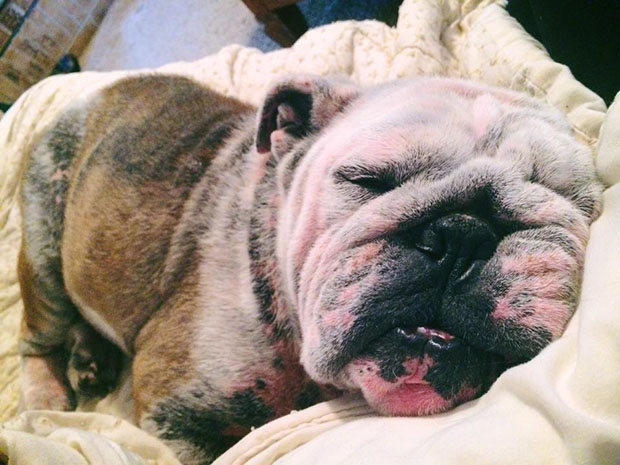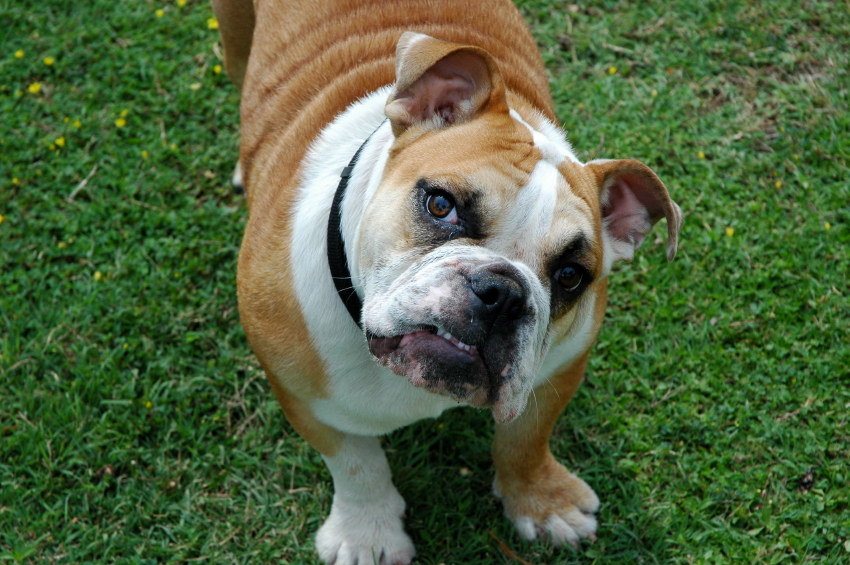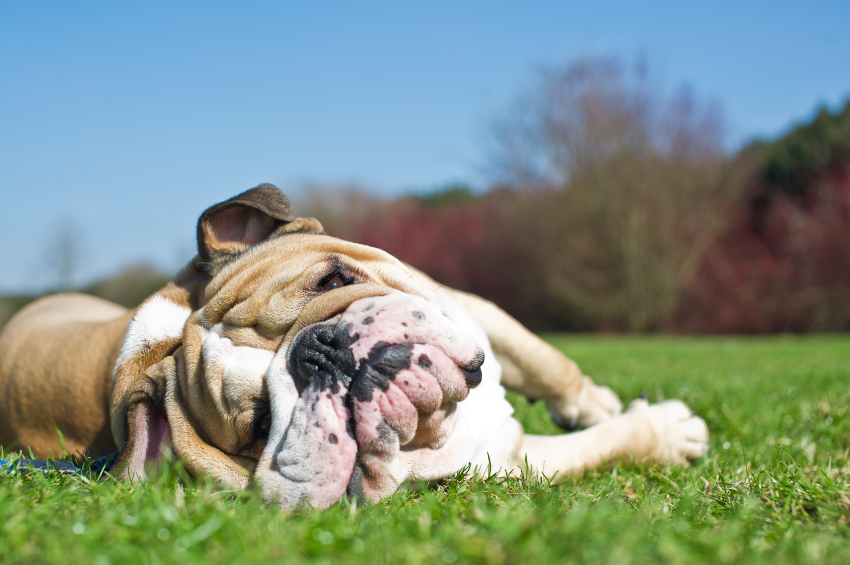Yeast Infection in Bulldogs is common. Yeast infection mostly happens when the immune system becomes underactive.
There is something we call the immune system spectrum and to be healthy, an individual’s immune system must be in the middle – meaning it should be balanced. If your Bulldog has an underactive immune system, this can lead to yeast overgrowth or other diseases. On the other hand,an overactive immune system can lead to allergies to the most random things. However, an overactive immune system can somehow lead to yeast infection as well.

Generally, developing allergies is a sign of an overactive immune system and vets would often prescribe steroid therapy to stop the immune response. This means that when your Bulldog’s immune system is shut down, the body cannot regulate itself and it cannot balance the normal flora levels in the body. When this happens, your Bulldog can suffer from yeast blooms.
Antibiotics and Its Role in Developing Yeast Infection in Bulldogs
When your Bulldog suffers from allergies and has developed secondary bacterial skin infection, veterinarians often prescribe antibiotics. While antibiotics do kill bad bacteria, they kill the good ones too. This can lead to the wiping of healthy yeast levels and this could make your Bulldog’s skin problem worse.
Dogs Can Develop Allergy to Their Own Yeast
A Bulldog, or any other dog, can also end up with lots more yeast if he or she has developed an allergy to his or her own yeast – something that vets can confirm via an Intradermal test. Most of them experience being red all over – from the tip of their down to the tip of their tail.
This is a problematic situation since a dog’s allergic response can affect his or her whole body and the way he or she lives. And let’s face it; it does seem that Bulldogs are more likely to develop allergies than other dog breeds.
This further proves that a balance in the immune system should be maintained since both dogs with underactive immune system and dogs with overactive immune system can both experience yeast overgrowth.
Signs of Yeast Infection in Bulldogs
Smell
You will be able to tell if your Bulldog has a yeast infection by smelling him or her. Yeast has a particular smell.You will most likely be able to recognize it, or at least have a hunch that your Bulldog does have a yeast infection if he or she smells like one of these:
- Popcorn,
- Cheese,
- Corn chips,
- Moldy Bread,
- Or other similar scent.
There are a lot of dogs who experience yeast infection in their feet and this causes the paws to smell like popcorn or something dog owners call “Frito Feet”. Do note the smell of yeast is different from the usual dog smell.
Itchiness
Severe scratching is another sign you should look out for if you suspect your Bulldog has yeast infection. Overgrowth of yeast can be severely itchy and it will be very hard for your Bulldog not to scratch his body and ears. Your Bulldog may also try to scoot if he feels the itch on his bum. He or she may also try to relieve the itch of his or her paws by licking and biting them.
Diagnosis
If you suspect your Bulldog has yeast infection, then a trip to the vet may be necessary. To determine if your Bulldog is indeed suffering from yeast infection, the vet may do a skin swab/skin scrape test on your pooch and look at the sample under a microscope. The vet may also opt to culture a sterile swab of the skin and identify it.
Clear Yeast Infection in Bulldogs
Changing Diet
If your Bulldog has yeast infection all over his body – like in most cases – then changing his diet may be necessary. There is something we call dietary sugar. Carbohydrates break down into this sugar, which is yeast’s source of energy. Most veterinarians recommend getting these sugars out of their patients’ diets. To stop your Bulldog from consuming these sugars, vets recommend checking the label of the food you’re planning to feed your Bulldog and avoiding products that contain high fructose corn syrup, honey, sweet potatoes, and white potatoes.
But if your Bulldog has severe yeast infection, then going for the entirely sugar-free diet is advised. Replace carbohydrates with low-glycemic veggies. Do not feed your Bulldog food that contains rice, corn, potatoes, corn, and wheat.
Adding ‘Anti-Fungal’ Foods
Aside from changing your Bulldog’s diet, you may also try adding some food or ingredients that can help keep yeast infection away. Oregano and garlic have anti-fungal and anti-yeast properties that can help reduce the level of yeast in your Bulldog’s body. Apple Cider Vinegar and Brewer’s yeast may also help.
Dealing with Yeast Infection in the Ears
Yeast infection may occur on specific parts of the body only – like the ears or the paws. Aside from providing different diet for your Bulldog, you may try disinfecting the yeasty body part to help stop the infection.
Your veterinarian will most likely recommend a medicated ointment, salve, cream, or dip. But before applying the chosen topical, it is important to clean and disinfect the affected area first. Removing the dead of layers of yeast before applying the topical is needed as well.
This means that if your Bulldog’s ears have yeast infection, it is important to remove the wax and debris in it before applying the ointment or putting drops in them. The cleaning and the medication is often advised to be done twice a day for two weeks. Once the ears clear up and there is no sign of yeast infection left, it is important to regularly clean your Bulldog’s ears. The frequency depends on the amount of wax your Bulldog’s ears produce and this varies per dog. Do not forget to dry your Bulldog’s ears after cleaning as a moist environment is god breeding ground for both bacteria and yeast.
Read: Ringworm in Bulldogs: Essential Oils for Ringworm Infections
Clearing Yeast Infection in the Paws
Since yeast thrives in moist environments, it is not surprising to know that a lot of dogs experience yeast infection in the paws – particularly in between the digits and paw pads. The armpit, groin creases, the area around vulva and anus are also prone to yeast overgrowth. That’s why disinfecting and drying these parts are very important, especially in the summer.
A way to disinfect your Bulldog’s paw pads is by soaking them in a water-hydrogen peroxide solution. TO make this solution, mix gallon of water with 1 cup of hydrogen peroxide, and 1-4 cups of white vinegar. Do not forget to dry your Bulldog’s paws.
Bathing Options for Yeast Infection in Bulldogs
If your Bulldog has yeast overgrowth all over the body, then bathing him or her with anti-fungal shampoo 1 to 3 times per week should help. There are shampoos in the market that help get rid of yeast like tea tree oil shampoo. Oatmeal-based dog shampoos are a no-no.
For the rinse, you may mix 1 cup of vinegar or lemon juice with a gallon of water. You also add 20 drops of peppermint essential oil in it to make the smell more pleasant. Pour the mixture on your Bulldog’s body and rub in on “yeast-prone” areas like the groin, paw pads, and armpits. Then, dry your Bulldog with a towel.
Recurrent Yeast Infection in Bulldogs
For many dogs, yeast infections are seasonal and they usually come out when it gets hot and humid. If your Bulldog experiences yeast infection during these days, then being vigilant. Keeping your Bulldog’s diet in check and his or her body parts dry will lessen the chance of developing yeast infections.
But if your Bulldog experiences yeast infections all year-round, you might want to have him or her checked by the veterinarian for possible immune system problems.

